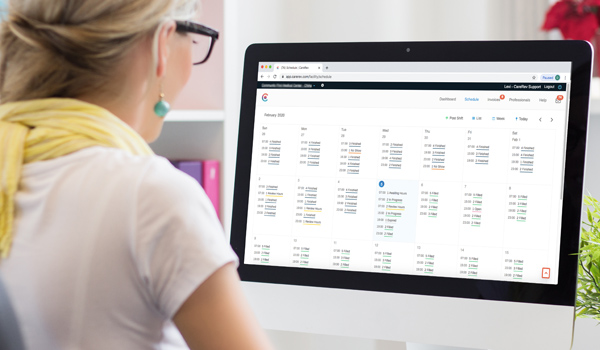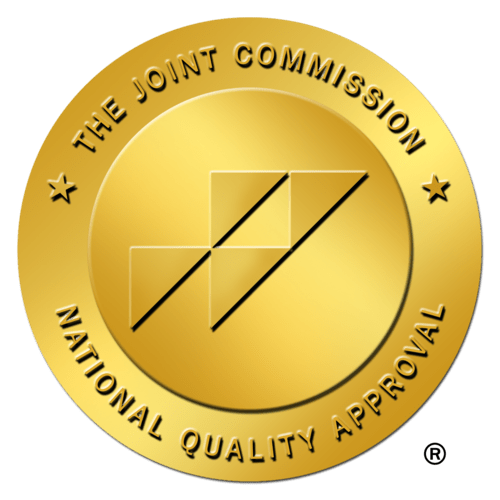
New technology has long promised to resolve inefficiencies that have plagued healthcare for years. Now, pushed by a pandemic-driven need to accelerate technology adoption, healthcare organizations are listening—and taking action.
According to a McKinsey report, “payers, providers, healthcare services, and technology firms are acquiring assets to extend their data and analytics capabilities and engage with patients longitudinally, driving almost $40 billion in healthcare technology deals from 2014 to 2018.” Investment in technology extends to infrastructure improvements to meet interoperability goals, migrating workloads to the cloud, and integrating new platforms to improve staffing efficiency and revenue cycle management.
Here, we take a look at a few advances that support healthcare’s quest to lower operational costs, improve efficiency, and keep employees motivated and engaged.
Chatbots

Chatbots use artificial intelligence to “chat” with patients via text or voice. During the COVID-19 crisis, chatbots became invaluable as a way to screen patients without increasing human workload.
Providence St. Joseph Health and Mass General Brigham use chatbots for COVID-19 screening. Froedtert Health, a health system that serves the Milwaukee, Wisconsin, area, started using chatbots recently to speed the hiring process—an initiative that will continue in 2021 according to Chief Human Resources Officer Eric Humphrey.
A recent study shows patients are okay with chatbot chatting to get their healthcare questions answered. According to a study published in Journal of the American Medical Informatics Association, patients viewed chatbots as favorably as humans—provided the bots deliver the same perceived quality.
Notable chatbot vendors include LifeLink, Babylon Health Services, Sensely, and HealthTap.
SaaS (Software as a Service)

The benefits of SaaS—convenience, speed, ease of use, reduced IT costs, and workflow improvements, to name a few—have made cloud-based software ubiquitous in healthcare.
According to a 2019 survey conducted by College of Health Information Management Executives (CHIME) members, all respondents said their organizations used SaaS. Most (63%) use six or more applications.
SaaS use remains strongest in clinical, with patient portals and telemedicine as the most popular services. Between 20% and 33% choose SaaS for operational solutions such as medical billing, scheduling, revenue cycle, and HR.
Two major SaaS platforms--Human Capital Management (HCM) and Enterprise Resource Planning (ERP)--have been in place for some time. Cloud-based versions of these offerings have improved staff productivity by allowing teams to spend less time on rote administrative tasks and more time on strategic, high-value initiatives.
In addition to major players, several niche SaaS startups are transforming healthcare workforce management.
Mya Systems uses conversational AI to improve candidate engagement and communication. The solution claims to “improve the ability of talent acquisition teams to find and convert the most engaged best-fit candidates into hires.”
Humu focuses on improving the well being of the people you have. The software uses machine learning to deliver “nudges” to employees to help them stay connected and engaged. Think of these nudges as a digital executive coach, helping you and your staff improve work habits and show resilience in times of stress. And who doesn’t need a positive nudge these days?
Meanwhile, CareRev is disrupting the healthcare staffing industry with its easy-to-use web and mobile apps. Hospitals and outpatient centers across the United States use CareRev to create and access their own local, fully-vetted float pools of healthcare professionals who pick up shifts on-demand from their mobile app.
Using CareRev, staffing managers can post and fill shifts within minutes - skipping the traditional agency altogether. This allows the hospital to reduce labor costs and create a more flexible workforce that can better withstand the daily ebb and flow of patient demands.
Mobile solutions

Millennials, the largest generation in the United States labor force, value flexibility. To attract, engage, and retain these workers, a mobile-first strategy is paramount.
Mobile technology not only gives employees the flexibility and real-time engagement they want, it also makes an impact on productivity and patient care.
A 2019 study published in JMIR mHealth and uHealth found that among emergency department providers surveyed, 82% said they believed smart devices improved care team coordination. Admittedly, 41% of these respondents said they were distracted by their personal mobile device.
With the right controls in place, however, mobile devices can improve clinician productivity. For example, an enterprise mobile device with built-in barcode scanner can quickly and accurately read barcodes on wristbands, vials, medical devices, and paperwork, which saves tons of time on a common repetitive task.
Froedtert Health recently enabled a mobile solution for stress management. The health system also uses mobile for just-in-time learning and (via CareRev) to fill last-minute shifts.
Healthcare organizations can also use mobile apps like CareRev to give employees and per-diem workers the flexibility to manage their own schedules. Say goodbye to paper request forms, time clocks, and endless phone calls to fill shifts. Mobile allows workers and managers to complete these tasks and others with tap and a swipe.
Artificial intelligence

After years of talk, AI is making its foray into the healthcare sector. According to a survey from the Deloitte Center for Health Solutions, 83% of respondents identified artificial intelligence and machine learning as the technologies most likely to transform healthcare in the next 10 years.
Because of its ability to process vast amounts of information quickly, AI will play a greater role in clinical decision-making and operations in 2021 and beyond. When applied to supply chain, revenue cycle, patient experience, and workflow optimization, AI has the potential to resolve longstanding cost-control issues.
By conducting a simple query, clinicians can learn which products are tied with more favorable outcomes. A hospital or ambulatory surgery center can uncover and resolve inefficiencies in room turnover to help it increase revenue.
With the potential of AI and other technology comes risk. Healthcare organizations will need to shore up practices around data privacy and security, as well as develop measures to instill trust in the technology among physicians, clinicians, and staff.
Technology trends to watch
These new technologies haven’t hit healthcare in a measurable way yet, but they have exciting potential:
• 5G: for superior speed, to eliminate telemedicine connectivity issues.
• Virtual reality: for virtual tours and to calm anxiety before surgery. The technology is already being used effectively for surgical training.
• Blockchain: to store patient data and to monitor disease (the CDC is exploring a blockchain-based surveillance system)





